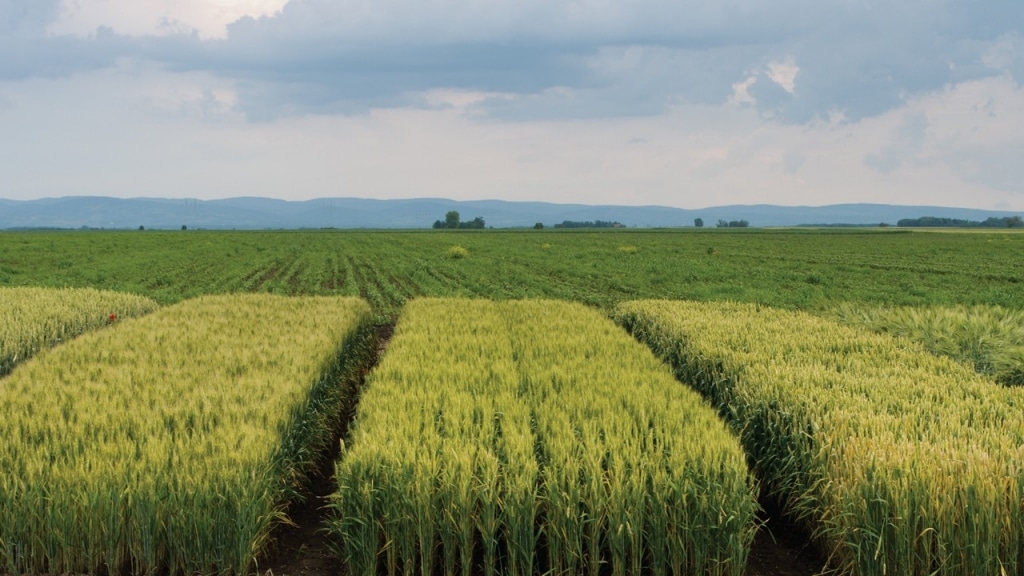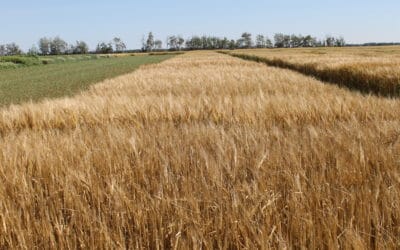Although producers may have applied important agronomic measures prior to and throughout the growing season to prevent Fusarium Head Blight (FHB) damage to cereal crops, these measures only provide disease suppression. Neil Whatley, crop specialist at the Alberta Ag-Info Centre, explains why it is necessary to integrate additional measures at the time of harvest into your disease prevention program. It is important at harvest to prevent fusarium damaged kernels (FDK) from going into storage.
Harvest management of FHB to increase grade includes combine adjustments. Explains Whatley, “Many FDKs – especially in wheat – are smaller, lighter in weight, and more shrunken than normal, healthy kernels. Combine fan speed can be increased to blow out those infected kernels.” Whatley adds that this may not be an option for FHB infected barley and oats where there is less kernel shrivelling.
“Slower combine travel speed, especially in lodged wheat, also aids in separating good kernels from FDKs by avoiding occasional combine overloads. That ensures an increase in air blast time to reduce FDK level in the grain sample.” Using a gravity table after harvest can further help with separating light-weight FDK.
“However, producers in areas where FHB caused by Fusarium graminearum (Fg) is just starting to appear and become established, may want to be cautious about using combine settings to blow out infected wheat kernels,” says Whatley. “The shriveled kernels tend to be the part of the wheat plant that is one of the most prolific producers of the wind-borne spore stage. It would then represent a higher risk to subsequent crops. Producers in areas with a lower risk of FHB may want to look at post-harvest cleaning of grain if they are concerned about removing FDKs to improve grade and reduce the mycotoxin deoxynivalenol (DON).”
Whatley says that additionally, combines should be properly set to thoroughly chop and uniformly spread cereal straw and chaff to encourage better residue decomposition and reduce pathogen survival in a field. “Remove loose crop residue from harvest equipment before leaving an infested field to prevent spreading the disease to non-infected fields.”
Symptoms of FHB can be observed in the harvested grain, especially in wheat. Typically, infected wheat kernels will be shriveled and have a chalky white appearance with some evidence of fungal growth. In contrast, infected barley kernels do not typically exhibit a lot of shriveling. Instead of having a chalky white appearance, they will exhibit a brownish discolouration and may show evidence of fungal growth. The brownish discolouration can be easily confused with infections due to the spot blotch fungus – kernel smudge – while hail damage can also produce similar discolouration in barley.
While infection occurring at early flowering can lead to complete abortion of kernels, fusarium damaged kernels generally result from infection that occurs from the early to mid-flowering stages. Later infections that occur well after flowering and up to the soft dough stage of kernel development may not show visible symptoms. However, kernels may contain the fungus, and more importantly, the mycotoxin it produces.
Fusarium damaged kernels of wheat showing shriveling with a chalky white appearance.
Picture courtesy of Kelly Turkington, AAFC.
Fusarium damaged kernels of wheat showing shriveling with a chalky white appearance.
Picture courtesy of Kelly Turkington, AAFC.
Fusarium damaged kernels of barley with limited to no shriveling and with a brownish discolouration.
Picture courtesy of Kelly Turkington, AAFC.
Even if symptoms are not observed in the growing crop, Whatley says that representative grain samples collected at harvest can be sent to a seed testing lab to determine the level of grain infection by Fusarium graminearum, the most important FHB species, and the concentration of DON. If FDKs are observed in the harvested grain, these can also be tested by commercial labs.
“DON can continue to develop in wet grain, so drying or aerating cereal grains to safe storage moisture contents as soon as possible after combining is important,” explains Whatley. “High DON grain should be segregated and monitored while in storage. Prevent moisture migration or re-wetting of an area of the bin to avoid further DON development.”
Routine testing of harvested grain and seed intended for planting is another way of assessing the presence and extent of Fusarium graminearum, especially if harvested grain is downgraded due to the presence of FDK. Several private seed company labs offer testing services for Fusarium graminearum in cereal seed/grain.
Whatley adds that if grain infested with FHB is intended to be used for livestock feed, grain samples should be tested for DON levels through a lab analysis. “Knowledge of mycotoxin levels will provide guidance as to whether the grain is suitable for feeding, especially for more sensitive animals, such as swine, dairy cattle and horses that tolerate a maximum of 1 PPM. The maximum tolerated DON level for beef cattle, sheep and poultry is 5 PPM. It is important to know the amount of DON present (PPM) and then dilute the contaminated grain with healthy grain or forages to lower the amount of toxins to a safe level for feeding.”
For more information about fusarium head blight concerns at harvest, contact the Alberta Ag-Info Centre at 310-FARM (3276).
Source: Alberta Agriculture and Forestry





